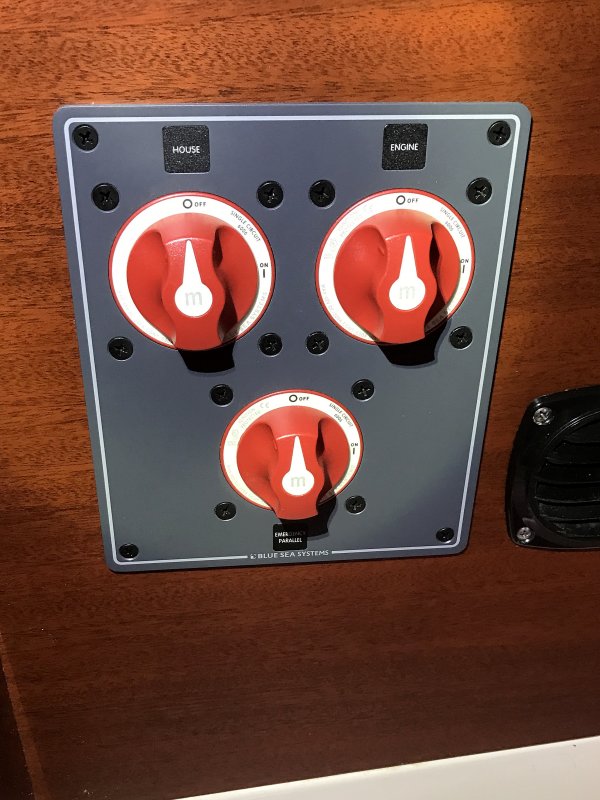If this thread is still active, And is about battery switch wiring, I have a slight twist on the topic.
It deals with an original old boat set-up.
Simply put: I have rewired all DC circuits with new tinned wire. They have been attached to the original panel with new, appropriate circuit breakers and inline fuses.
I have installed a new "OFF 1 Both 2" master switch and identified which heavy cable goes to which battery and the starter and replaced them with new.
I have not installed an inverter, combiner, battery monitor or controller yet and won't until next Spring when I buy a new panel. Then I get to do all the fancy stuff mentioned in this thread.
For now I just want to finish reconnecting the job as described above.
So...
I've got a red, 10 ga. wire going from the Positive side of the panel to the Master switch connection position "C" (along with the 2/0 starter cable), and a black, 10 ga. wire (was originally white) attached to the engine (Main Ground ?) going to the ???? (Not sure).
I'd like some expertise before I screw up something important like the alternator, the boat or Me!
Thanks in advance.
G
It deals with an original old boat set-up.
Simply put: I have rewired all DC circuits with new tinned wire. They have been attached to the original panel with new, appropriate circuit breakers and inline fuses.
I have installed a new "OFF 1 Both 2" master switch and identified which heavy cable goes to which battery and the starter and replaced them with new.
I have not installed an inverter, combiner, battery monitor or controller yet and won't until next Spring when I buy a new panel. Then I get to do all the fancy stuff mentioned in this thread.
For now I just want to finish reconnecting the job as described above.
So...
I've got a red, 10 ga. wire going from the Positive side of the panel to the Master switch connection position "C" (along with the 2/0 starter cable), and a black, 10 ga. wire (was originally white) attached to the engine (Main Ground ?) going to the ???? (Not sure).
I'd like some expertise before I screw up something important like the alternator, the boat or Me!
Thanks in advance.
G
Last edited:




